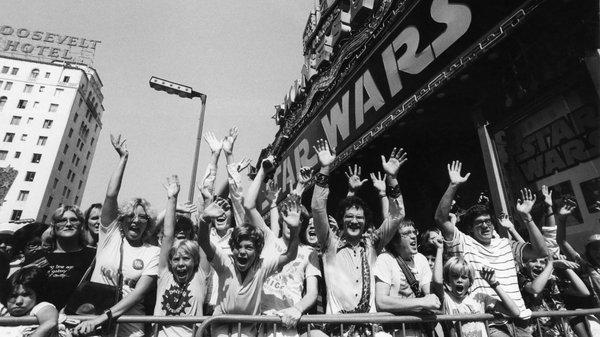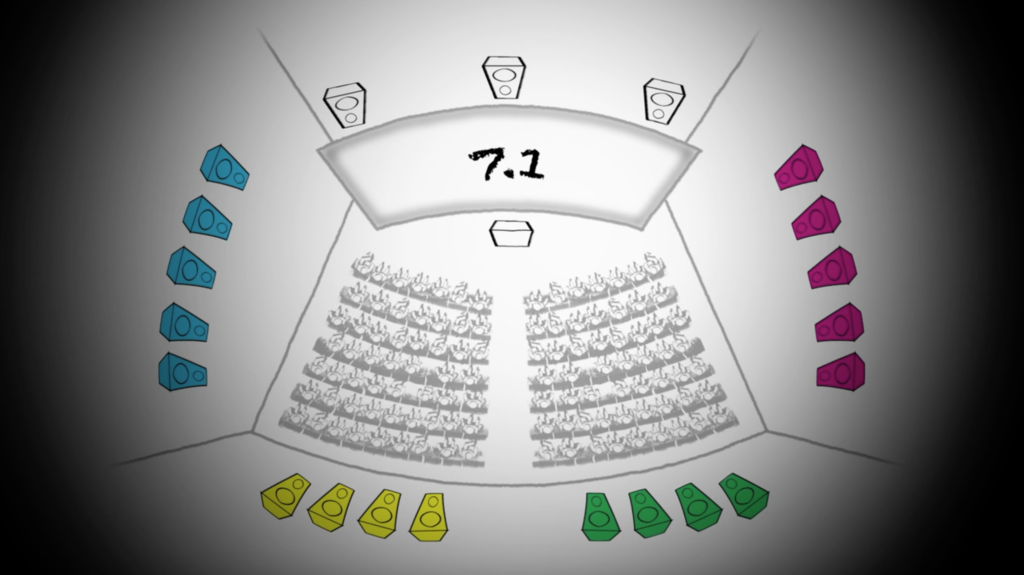Any respectable audiophile would be more than familiar with Dolby Atmos – the latest technology in cinematic history that allows filmmakers to place and navigate sounds anywhere in the theatre to a tee.
With its 3D positional sound capabilities, Dolby Atmos joins the forefront of immersive media technologies — alongside HDR screens with Dolby Vision — that will drive the next generation of cinema and home theatre experiences.
 Image credit: Dolby
Image credit: Dolby
Touted as the next generation surround format for the industry, Dolby Atmos is a virtual reality of sound that puts moviegoers in the heart of the action.
But as with most of today’s ground breaking advances, comes a long history of technologies and innovations that precede them. In that spirit, let us take a step back into the early days of cinema sound and chart the evolution that led to the breakthrough of Dolby Atmos.
The mono beginnings
Silent movies were never entirely silent; they were largely accompanied by sounds from a live orchestra to the noise of the projector. It was not until the release of Warner’s ‘The Jazz Singer’ in 1928 — the first feature-length motion picture with synchronised sound — that suggested the end of the silent films era.

However, there was little advancement in the decades that followed and until the 1970s, almost all movies were in mono. With a single speaker placed behind the screen, the audio experience was flat at best.
Breaking new ground with stereo
Dolby Stereo then found its way into our cinemas in the mid 70s, which allowed for two channel soundtracks to be decoded to a dedicated dialogue track in the center of the screen, along with two additional speakers on the left and right and an additional surround channel. This gave a spread and sense of imaging inside the room that was never heard before.
With the potential of a richer sound, the possibilities of stereo was endless, and there was no greater example of the technology’s breakthrough than the 1977 release of ‘Star Wars‘ – an experience that attracted moviegoers by the thousands and forever changed the expectations for cinema sound.
 Opening day of George Lucas’ Star Wars at Grauman’s Chinese theater, May 25, 1977
Opening day of George Lucas’ Star Wars at Grauman’s Chinese theater, May 25, 1977
It didn’t take long for stereo to catch on with more hit movies that followed, such as ‘Close Encounters of the Third Kind‘ (1977) and ‘Superman‘ (1978). By 1985, every film was in Dolby stereo.
The advent of surround sound
By the time the 1990s came along, it became clear that digital was the way to go.
Dolby Digital was hence developed, delivering 5.1 channels of cinema sound by splitting the room into half – left, center, right, left surround, right surround and subwoofer. This allowed the sound to have more sense of movement across the audience. ‘Batman Returns’ became the first movie to be released in this format in 1992.
 Image credit: Dolby Laboratories
Image credit: Dolby Laboratories
With the transition into digital cinema came the 7.1, where the rear surround speakers were split into left and right channels. This gave the sound even more definition, adding more dimension to the cinematic experience.
Redefining the cinematic sound experience
While logic would entail that the natural next step be to keep piling on the channels, it was also evident that the format’s potential for enhancements was coming to a standstill. Channel-based solutions allowed for basic movement of sound, but lacked the sensation and precision that content creators wanted.
To that end, Dolby Atmos was developed in a bold effort to lead the charge in redefining the cinematic sound experience. Touted as the next generation surround format for the industry, Dolby Atmos offers filmmakers the flexibility to place individual sounds anywhere in the cinema and move them around with precision. Simply put, it’s a virtual reality of sound that puts moviegoers in the heart of the action.
The fundamental shift from channels to object-based solutions allowed filmmakers to approach sound elements as dynamic objects travelling across the room. The sound can travel through each speaker placed around and above the audience as it moves across the cinema, in what’s called a pan-through array.
 Image credit: Dolby Laboratories
Image credit: Dolby Laboratories
By also placing speakers above the audience, the overhead surround adds an upper hemisphere of sound that moviegoers have never experienced before, creating a truly immersive feel of sound.
Coming to a Dolby Atmos cinema near you
It comes as no surprise that Dolby Atmos is quickly becoming the format du jour among filmmakers, with more than 100 titles from major Hollywood studios adopting the technology – most prominently in ‘Gravity’ (2013), which won seven Oscars, including awards for sound editing and sound mixing.
 Image credit: Warner Bros.
Image credit: Warner Bros.
In fact, most of the anticipated upcoming releases such as ‘Independence Day: Resurgence’, ‘Suicide Squad’ and ‘Wonder Woman’ will be available in Dolby Atmos. Here’s the full list to get you excited.
What’s more, you don’t have to go too far to experience the magic of Dolby Atmos, with Cathay Cineplex Jem and Golden Village VivoCity equipped with Dolby Atmos cinemas.
Alternatively, you’re more than welcome to drop by our studio for a demo in our very own Dolby Atmos certified dubbing theatre! Email us at contactus@mochachailab.com to set up an appointment.
Got a question for our sound experts? Ping us on Facebook!
